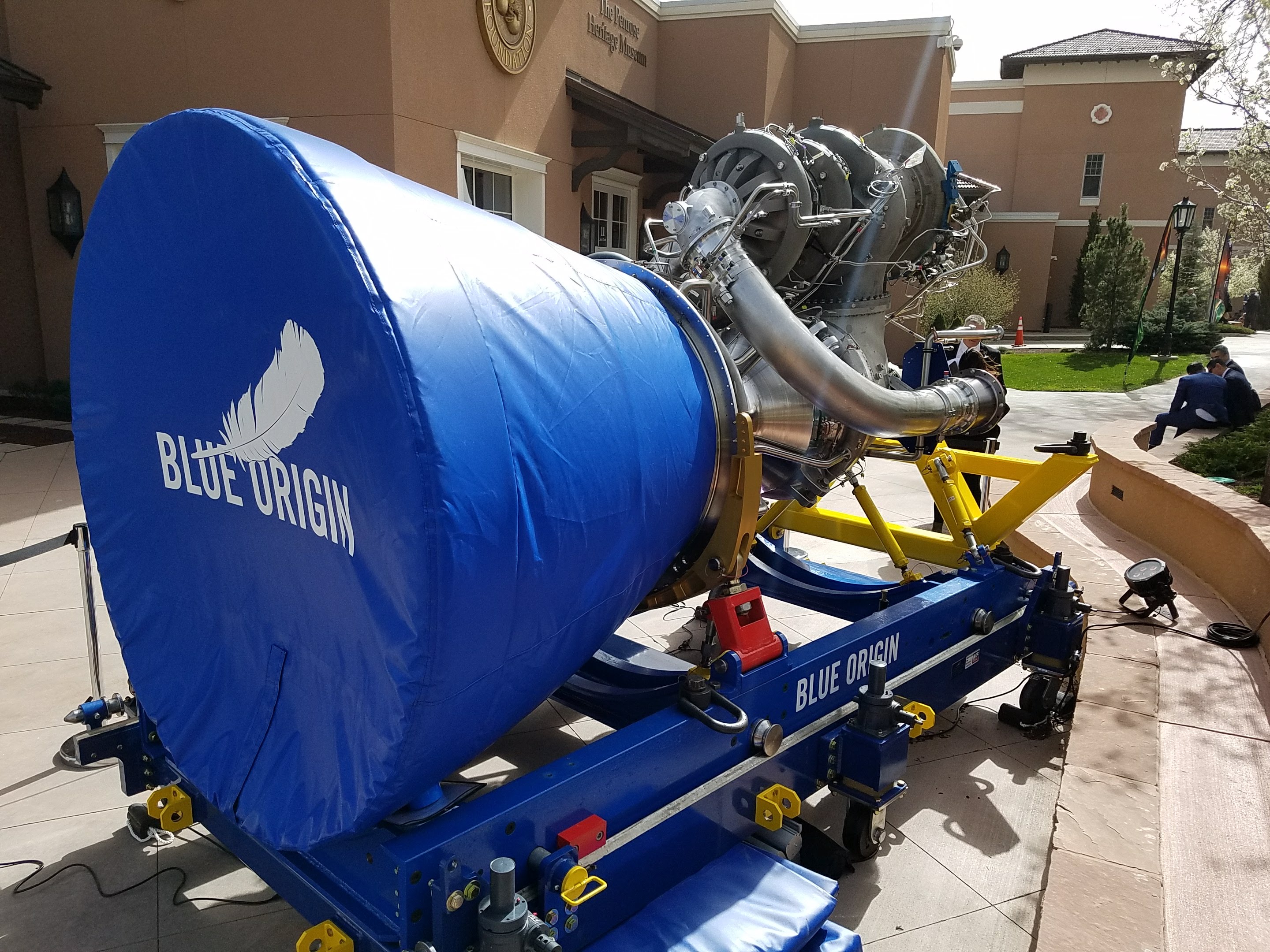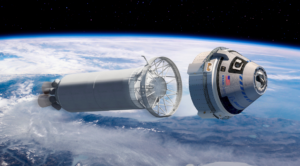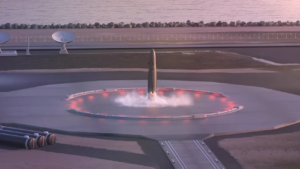
SpinLaunch Just Confirmed Payloads Are Compatible With Its Launch Environment
SpinLaunch is a unique company with the goal of completely reinventing the process of accessing space. Rather than launch a rocket they want to fling payloads at immense speeds doing the majority of the work for them. However, one of the biggest concerns with this method has to do with the forces applied to the payloads and whether or not it’s possible to withstand them.
Just yesterday SpinLaunch announced the results of its most recent flight test which was the 10th ever. This being said, this was a special flight compared to some in the past as it tested not only the suborbital accelerator but also the forces on the payload. Specifically, this test included payloads from NASA, which is interested in the future of this system and its viability.
Considered a successful test flight, this is very good news for the company as they continue to work toward an orbital accelerator. In addition, this specific test just a week ago on September 27th, was witnessed by many partners, government officials, and more. Here I will go more in-depth into the recent test flight, what the results were, its importance going forward, and more.
Test Results

In the last year alone, SpinLaunch has been continuing to test its Suborbital accelerator. The Suborbital Accelerator is designed to operate from 800 to 5,000 mph and acts primarily as a test-bed for the Orbital Launch System. Yesterday, however, the company tweeted saying, “We’re excited to share the results of our 10th successful Flight Test on the Suborbital Accelerator – which included payloads from @NASA_Technology, @AirbusSpace, @Cornell & @outpostspace.” Specifically, the company just announced the results of its tenth successful Flight Test of its Suborbital Accelerator from Spaceport America, New Mexico. The flight test, which occurred on September 27, 2022, demonstrated that SpinLaunch partners’ standard satellite components are inherently compatible with the company’s launch environment, and provided critical flight data, as all payloads were flown and recovered successfully. In addition, Flight Test 10, which had a similar flight trajectory as previous campaigns, was witnessed by more than 150 partners, government officials, and industry advocates. It was SpinLaunch’s tenth flight test in just under eleven months since the Suborbital Mass Accelerator came online in late 2021.
Four partner payloads, as well as two instrumentation payloads, were flown on the Suborbital Accelerator Flight Test Vehicle. For partners, the flight test provided critical data on the launch environment and payload integration process. As part of the pre-flight qualification process, SpinLaunch accelerated payloads up to 10,000G in SpinLaunch’s 12-meter Lab Accelerator at its Long Beach headquarters. Payloads were inspected post-spin and subsequently integrated into the Flight Test Vehicle in preparation for Flight Test 10.
After the test, Founder and CEO of SpinLaunch, Jonathan Yaney said, “Flight Test 10 represents a key inflection point for SpinLaunch, as we’ve opened the Suborbital Accelerator system externally for our customers, strategic partners, and research groups. The data and insights collected from flight tests will be invaluable for both SpinLaunch, as we further the development of the Orbital Launch system, and for our customers who are looking to us to provide them with low-cost, high-cadence, sustainable access to space.”
This most recent test has to do with a Space Act Agreement made with NASA not long ago. Back on April 6th, SpinLaunch tweeted mentioning, “We’re excited to announce we’ve signed a Space Act Agreement with @NASA_Technology. Through the partnership, we’ll fly a #NASA payload on our Suborbital Accelerator to collect the necessary data to enable potential future commercial launch opportunities. The Space Act Agreement is part of NASA’s Flight Opportunities Program, which demonstrates promising technologies for space exploration, discovery, and the expansion of space commerce through suborbital testing with industry flight providers.
Here they announced that SpinLaunch will manifest and fly the first NASA payload on a developmental test flight later this year and provide means for post-flight recovery of payload back to NASA. The two organizations would then work jointly to analyze the data and assess the system for future flight opportunities. After full review, NASA and SpinLaunch will publish all non-proprietary launch environment information from the test flight. Thankfully, just yesterday we received the initial results which seem to be very promising. One of the biggest concerns with SpinLaunch’s design is the forces applied to the payloads during the spin process and release into the atmosphere. This test gives both SpinLaunch and NASA more confidence as they work toward an Orbital Accelerator. This being said, an Orbital Accelerator is a lot more powerful than the Suborbital variant and will likely come with additional challenges. Either way, this test is a step in the right direction and good for the future of the company.
Payloads Onboard

Now that we know more about the overall test results and the purpose, we can take a detailed look at some of the payloads on board and exactly what information was gathered. Starting with NASA, there were two key goals at the heart of the agreement: to better understand SpinLaunch’s payload integration and testing procedures, and gain insight into the mass accelerator launch environment. To fulfill this objective, NASA provided a Data Acquisition Unit (DAQ) to capture critical launch characteristics of SpinLaunch’s kinetic launch system. The sensor suite was equipped with two accelerometers in addition to a gyroscope, magnetometer, and sensors for pressure, temperature, and humidity. Prior to handoff, NASA performed their own thermal and acceleration tests to validate the DAQ would capture the desired launch environment data. After the NASA qualification tests, SpinLaunch conducted high-g acceleration testing on the DAQ and confirmed the function of the hardware in advance of the Suborbital Accelerator Flight Test.
After the completion of Flight Test 10, the DAQ was successfully recovered and removed from the Flight Test Vehicle. SpinLaunch test engineers retrieved the data and reviewed it with NASA personnel from their Flight Opportunities program, who were onsite to observe the Flight Test in person.
You then had Airbus U.S. Space and Defense. For Flight Test 10, Airbus U.S. provided their satellite sun sensor, which is typically used for spacecraft attitude control and positioning purposes. The sun sensor was tested at 10,000G in SpinLaunch’s 12-meter Lab Accelerator prior to integrating it with the flight test vehicle. Successful testing to 10,000G was the first step in qualifying subsystems for use on SpinLaunch’s orbital launch system. Following both the high-g centrifuge pre-launch testing and Flight Test 10, the sun sensor’s output signal was compared to the preflight data. This comparison testing verified that the performance and operation of the sun sensor was not affected by the loads during the pre-flight, flight, or recovery phases. Together, SpinLaunch and Airbus U.S. plan to work together to qualify a variety of Airbus U.S. satellite systems that are compatible with the SpinLaunch orbital centrifuge and flight environment.
Next was Cornell Engineering’s Space Systems Design Studio (SSDS), which developed and launched small, inexpensive satellites called ChipSats to provide distributed in-situ measurements of the upper atmosphere of multiple planets, including Earth. Flight Test 10 exercised the operation of a SpinLaunch designed payload deployment system, which released multiple ChipSats from the Flight Test Vehicle. The payload deployment system is a key value SpinLaunch can provide Suborbital Launch customers and partners. Future SpinLaunch tests with SSDS may include high altitude ChipSat dispersion to verify the accuracy of SSDS’s ChipSat reentry and atmospheric trajectory simulations.
Finally, Outpost, a company developing reusable satellites for high-precision Earth return, provided SpinLaunch with an onboard computer for testing and qualification in the SpinLaunch launch environment. Following the theme of other payloads, a preflight test was performed in the SpinLaunch Lab Accelerator to qualify the unit for the Flight Test. After a successful flight and recovery of the payload, a final functional test was performed, validating the flight computer is compatible with SpinLaunch’s launch environment. The flight test represents the first step towards the broader qualification of Outpost components and structures for SpinLaunch’s orbital centrifuge and launch environment. SpinLaunch and Outpost plan to continue their ongoing collaboration as both organizations seek to provide lower cost, more sustainable access to space. All of which is great news for SpinLaunch as they confirm a host of unique payloads could survive the harsh environment.
Conclusion
SpinLaunch has quite the ambitious goal when it comes to accessing space. In the last year alone the company has tested its Suborbital accelerator 10 times now. The most recent test was significant as it included a host of payloads including one from NASA, all of which retrieved promising results. We will have to wait and see how it progresses and the impact it has on the space industry.



